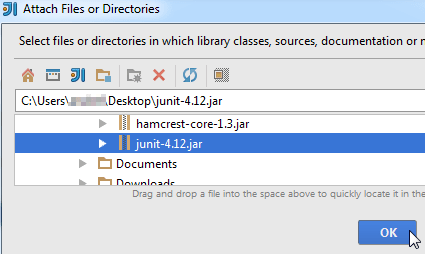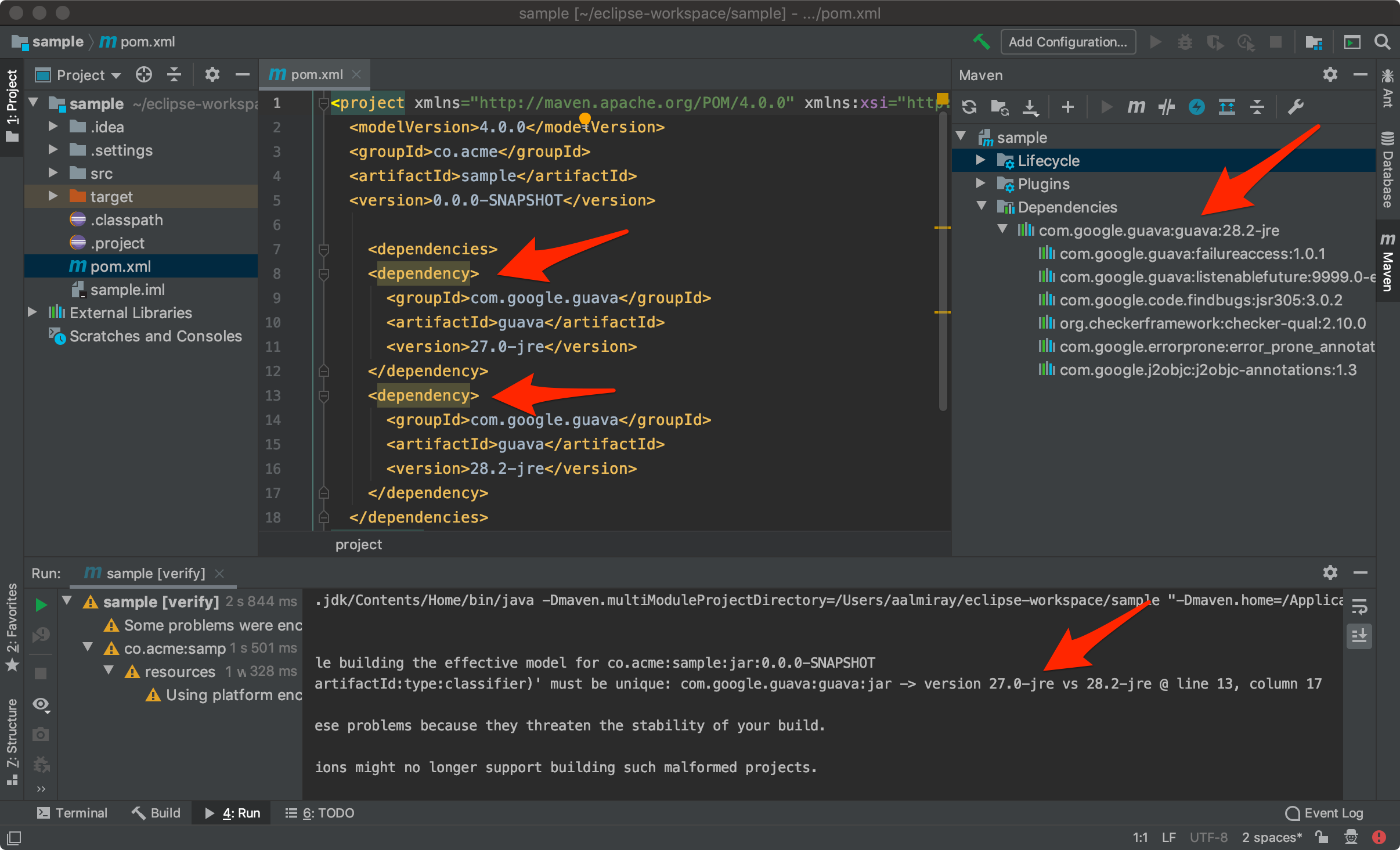
- #INTELLIJ JAR DEPENDENCIES UPDATE#
- #INTELLIJ JAR DEPENDENCIES MANUAL#
- #INTELLIJ JAR DEPENDENCIES ARCHIVE#
- #INTELLIJ JAR DEPENDENCIES CODE#
- #INTELLIJ JAR DEPENDENCIES ZIP#
That JAR is found in the /WEB-INF/lib folder of the WAR. The EJB is packaged in its own JAR, wf-restful-w-ejbs-devenv-demo-ejb.jar. A WAR containing both the MessageResource component and MessageEJB component is deployed to WildFly as wf-restful-w-ejbs-devenv-demo-rs.war. The following screenshot shows the Embedded JAR deployment.

#INTELLIJ JAR DEPENDENCIES ARCHIVE#
WAR Web archive - static web pages, dynamic Java Server Pages, REST or SOAP services, embedded EJBs JAR Java archive - a library or EJB packaging EAR Enterprise archive - an archive containing WARs, EJB JARs, application clients, and plain JAR libraries These are the types of JavaEE archives used in the article. A special suffix is a cue to the application as to the type of artifacts, the internal structure, and the deployment descriptors in the file.
#INTELLIJ JAR DEPENDENCIES ZIP#
These are all zip files that adhere to a certain JavaEE specification. In this article, the REST web service is the component "MessageResource" and the EJB is "MessageEJB". The web service returns a text/plain String to the caller, a browser in this case. The EJB contains business logic - a simple String format call - and returns a synchronous result to the web service. When an HTTP GET is issued to the web service, the web service invokes the EJB. This article demonstrates a JAX-RS (REST) web service backed by a Stateless EJB. Ultimate is needed for the JBoss connector. The IntelliJ screenshots in this article are of the Ultimate Edition which is the commercial (not free) edition. This article shows a development environment setup for efficiently working with EJBs with this newer innovations. JavaEE 6 brought additional EJB packaging options.
#INTELLIJ JAR DEPENDENCIES CODE#
The authors of JavaEE overhauled their product in JavaEE 5 to reduce the amount of code needed to build EJBs.

And it wasn't just me who had this appreciation. However, it didn't take long for me to appreciate the ease of development with the Spring Framework. When you execute the JAR file from the command line, you can see that everything works perfectly.WildFly EJB Development with IntelliJ and MavenĬoming from a CORBA background, I wasn't too bothered by the complexity of the early versions of Enterprise Java Beans. You will now see IDEA create the artifcat in the. So your end result of this step should look like this: As for the class path, I just enter the name of each JAR file that I’ve included in the project. I always go with the src folder as the output folder. MF file, select the main class and enter the class path. Step 10: The 3 main steps here are to: select an output folder for the MANIFEST. In my case, I went with creating a new one. MF file from the project if it already has one or create a new one. MF file that will link all these 3rd party JARs to your JAR and create an executable JAR as the end result. Step 9: Now it is time to create the MANIFEST. Step 8: If you did everything correctly, your final settings dialog should look something like this with both the 3rd party JARs and your JAR configured correctly. Here your-name would the value that you entered in the previous step. Step 7: Now right click on the compiled output of your code under the Available Elements panel and choose Pack into /your-name.jar option in the context menu that appears. Step 6: In the popup dialog that appears, enter the desired name of your JAR. To do that, click the Create Archive button in the Output Layout tab.

Step 5: Once you’ve included all the 3rd party JARs, it is time to include your code. Both methods work but I like this better as it keeps your code separate from 3rd party JAR files. This is slightly different from how Eclipse does it where all JARs are extracted into a single runnable JAR. These JAR files will now be present in the same directory as the compiled output of your code. In the Output Layout tab, under the Available Elements panel, select any 3rd party JAR files that you’d like to include with your JAR file and choose Put into Output Root in the context which appears when you right click on your selection.
#INTELLIJ JAR DEPENDENCIES UPDATE#
Step 4: Then update all other settings like Name, Output directory, Build on make etc. This is important so don’t forget to do that. Step 3: In the settings for the new artifact, select Other from the Type dropdown box.

#INTELLIJ JAR DEPENDENCIES MANUAL#
I think it is also good to the manual process so you are not dependent on any undercover magic. You could also go with From module with dependencies and have IDEA configure it all for you. Then click the + symbol to add a new artifact and select Empty from the popup menu. Step 2: In the Project Structure dialog box, select Artifacts. The following steps were performed on IDEA 2016.1 Well, everything is complicated until you figure it out so today I decided to take a few minutes and un-complicate it. That said, I’ve always felt that creating a JAR in IDEA is not very intuitive. While Eclipse is a great free IDE, IDEA does bring a lot more to the table and is worth the price IMHO. I’ve been using IDEA for a while now and have been very happy with it.


 0 kommentar(er)
0 kommentar(er)
